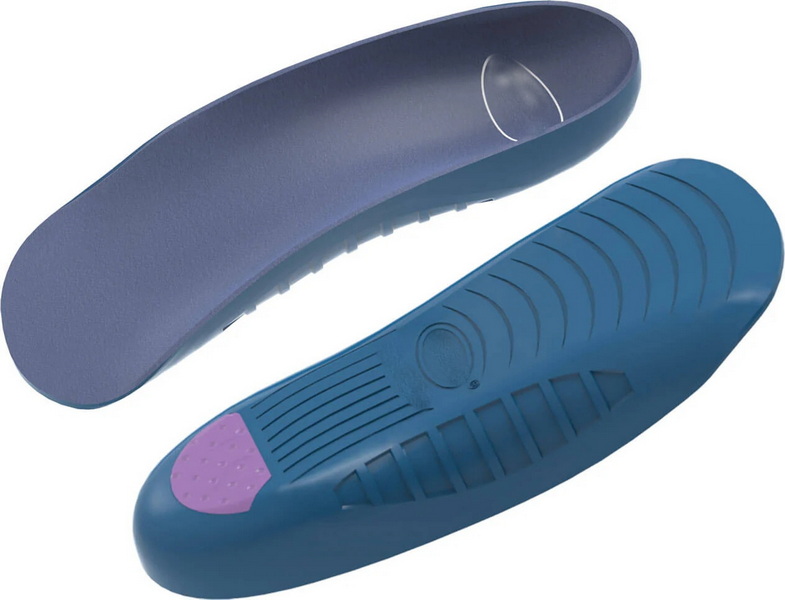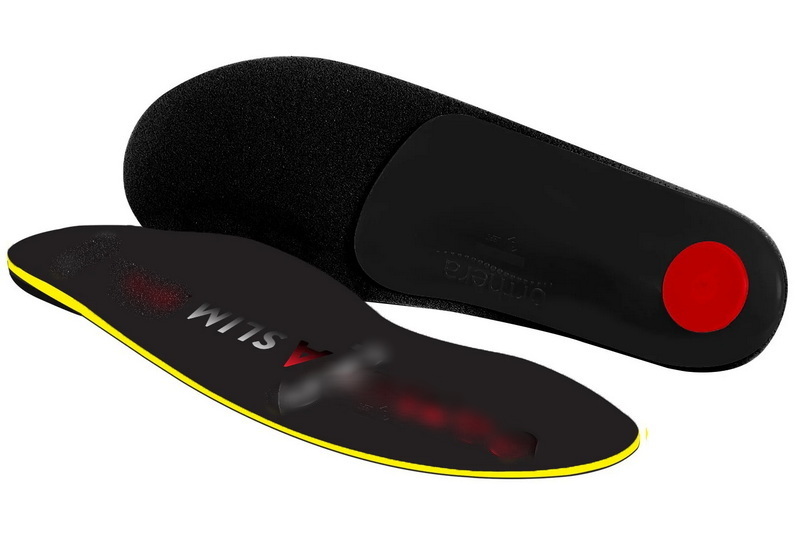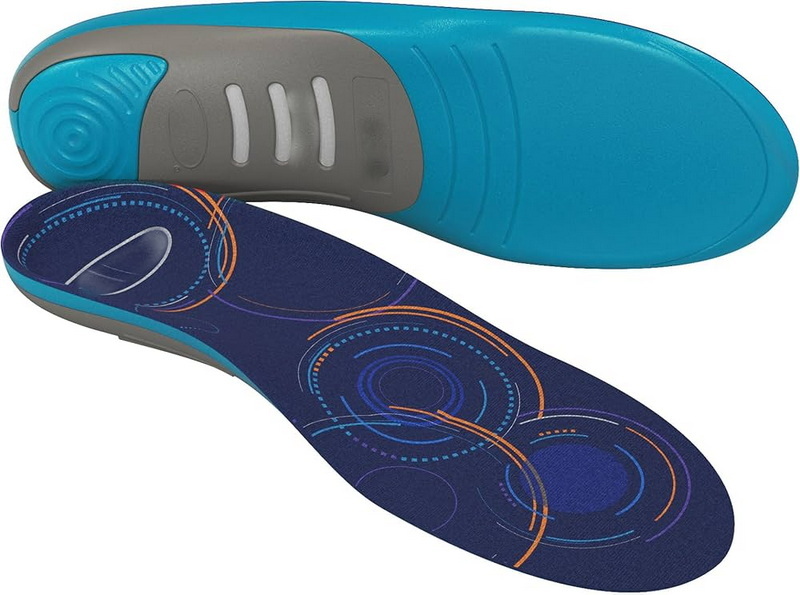Views: 222 Author: Edvo Publish Time: 2025-10-21 Origin: Site











Content Menu
● Introduction: Clarity in Footcare Solutions
● The Expanding Footcare Market and the Role of Orthotics
● Dr Scholl's Inserts: Categories and Functions
>> Comfort Inserts and Cushions
>> Technical and Corrective Inserts
● The Crucial Difference: Comfort Inserts vs. Orthotics
>> Orthotics
● Key Factors for International Brands: Navigating Insole Sourcing
● Manufacturing Insights: From Concept to Export
● Use Cases: Fulfilling Diverse Market Needs
>> Athletic and Leisure Market
>> Healthcare and Rehabilitation Market
>> Workplace and Industrial Market
● OEM Strengths: Why Choose a Leading Chinese Manufacturer?
● Common Buyer Questions: Addressing Your Concerns
>> Are All Dr Scholl's Inserts Certified as Orthotics?
>> What Materials Should I Specify for OEM Orthotic Production?
>> How Do I Ensure My Products Meet Global Safety Standards?
>> Is It Possible to Order Mixed-Type Shipments (Comfort and Orthotic Inserts)?
>> What Branding Customizations Are Available for International Buyers?
● Guidance for Partnering with OEM Factories: Steps to Success
● Trends Driving Future Growth in Insoles and Orthotics
● Conclusion: The Takeaway for Global Buyers
● FAQ
>> 1. What is the main difference between orthotics and regular inserts?
>> 2. Can Dr Scholl's inserts treat foot medical conditions?
>> 3. How do OEM manufacturers differentiate between orthotics and comfort inserts?
>> 4. Is it possible to order custom orthotics in bulk from China?
>> 5. What certifications are needed for exporting orthotics to other countries?
In today's global footwear industry, consumers and professional buyers alike pursue products that guarantee optimum comfort, support, and well-being. Dr Scholl's has emerged as a household name, influencing market trends and product development across continents. Yet a recurring question from brands and distributors remains: Are All Dr Scholls Inserts Orthotics? As one of China's top OEM shoe insole manufacturers, we understand how nuanced and significant this distinction is for international buyers. This article explores definitions, technical attributes, application sectors, manufacturing alternatives, and strategies for global buyers seeking the perfect orthotic insole product.

Modern lifestyles have amplified the need for specialized insole products. With increasing hours spent standing or walking on hard surfaces, foot discomfort is now a common complaint worldwide. The demand for solutions ranges from everyday comfort to clinical prescription.
Orthotics represent one of the fastest-growing subsectors due to population aging, rising diabetes prevalence, and a surge in sports and rehabilitation activities. For OEM partners, the opportunity lies not only in mass comfort products but especially in high-value orthotics that meet strict medical and export standards.
Orthotic devices are engineered foot supports that address biomechanical irregularities or medical conditions:
- Made from advanced materials such as high-density EVA, polyurethane, rigid plastics, or carbon fiber.
- Designed through specialized processes: 3D modeling, custom molding, precision CNC, or robotic assembly.
- Targeted for specific issues including plantar fasciitis, flat feet, high arches, heel spurs, diabetic complications, and postural alignment problems.
- Often custom-molded to fit an individual's unique foot anatomy and prescribed by medical experts.
For overseas distributors and brands, sourcing true orthotics ensures product differentiation and clinical trust.
Dr Scholl's has developed a broad spectrum insole portfolio. Understanding their classification is essential for buyers.
The most commonly found Dr Scholl's inserts are non-prescription comfort products designed for mass-market use:
- Cushioned gel inserts for general fatigue relief.
- Foam arch supports for walking comfort.
- Heel liners to minimize blisters in certain footwear.
- Shoe-specific insoles for boots, sneakers, or dress shoes.
These products prioritize ease of use, affordability, and broad compatibility rather than corrective intervention.
Dr Scholl's also offers specialized models, sometimes labeled as orthotic or orthotics-inspired, including:
- Dynamic arch support insoles for mild pronation correction.
- Sports variants with shock absorption and energy return features.
- Inserts for plantar fasciitis offering stronger arch and heel support.
However, unless indicated as “custom orthotic,” most of these remain comfort products approved for over-the-counter distribution.
Comfort inserts target the general population and prioritize quick, accessible relief. They do not treat underlying medical problems.
- Usually mass-produced via injection molding or vacuum forming.
- Can be easily swapped between shoes.
- Popular among busy professionals, students, and casual users.
Orthotics are a different category altogether—intended for biomechanical correction and medical support.
- Engineered using clinical data and advanced CAD design.
- Require rigorous testing for safety, fit, and effectiveness.
- May use multilayer composites, antimicrobial finishes, and targeted pressure relief zones.
- Frequently need healthcare provider consultation or prescription.
For OEM factories, this distinction impacts everything from required certifications to production line configuration and inspection protocols.

Global buyers—especially those supplying to pharmacies, specialist retailers, or rehabilitation centers—must consider:
1. Clinical Compliance: Orthotic products often require conformity to international standards, such as CE (EU), FDA (US), or ISO.
2. Material Selection: True orthotics may use higher-grade, hypoallergenic, and biocompatible compounds.
3. Custom Engineering: Customized orthotics increase user satisfaction and open lucrative markets in sports medicine and occupational health.
4. Brand Positioning: Marketing genuine orthotics elevates brand credibility and allows premium pricing models.
An OEM manufacturer prepared for advanced R&D and quality assurance is the right choice for such needs.
OEM manufacturing for insoles and orthotics combines high-volume capability with technical specialization.
- Design Exploration: R&D teams collaborate on functional prototypes using ergonomic data and market trends.
- Material Innovation: Selection ranges from classic EVA and PU foams to sustainable bio-based options and memory gels.
- Advanced Tooling: CNC, laser cutting, robotic lamination, and smart assembly lines enable efficient, repeatable precision.
- Quality Control: Dedicated testing facilities conduct compression, flexibility, anti-odor, and antimicrobial efficacy assessments.
- Packaging and Branding: OEM services support multi-language packing, private label printing, and compliance labeling for customs clearance.
Partnering with a manufacturer capable of both universal insert and medical orthotic production streamlines sourcing for brands targeting multiple consumer sectors.
Sports brands, gyms, and outdoor retailers depend on dynamic performance insoles:
- Shock absorption for runners and cross-trainers.
- Moisture management and anti-slip features.
- Lightweight build for quick energy return.
OEM manufacturers deliver tailored solutions that enhance comfort, reduce injury risk, and boost product loyalty.
Clinics, hospitals, and therapeutic providers require medical-grade orthotics:
- Custom-fit insoles for diabetic and arthritic patients.
- Orthotics that support surgical recovery and preventive care.
- Multi-density zones for pressure redistribution and ulcer prevention.
Meeting these needs demands strict quality assurance and evidence-based design, supported by advanced OEM engineering.
Safety footwear manufacturers and large organizations purchase bulk insoles for occupational health:
- Fatigue reduction for workers on hard surfaces.
- Anti-static and oil-resistant materials for hazardous environments.
- Reinforced arch and heel support for heavy-duty applications.
OEM factories integrate these features into scalable, export-ready product lines.
Working with China's top OEM shoe insole factories offers numerous benefits:
- Competitive cost structure for both small trial orders and full-scale mass production.
- Responsive R&D teams attentive to evolving global norms and user expectations.
- Fast prototyping using integrated digital workflows.
- Experienced export logistics with support for regulatory documentation and customs paperwork.
- Flexible branding, packaging, and customization services for unique market appeals.
China's skilled workforce, combined with forward-thinking management, allows for rapid advances in both technology and quality.
The simple answer is no. While select product lines meet medical criteria and may carry the “orthotic” label, the majority of Dr Scholl's inserts are comfort-focused and do not hold clinical certifications. Thorough product review and supplier inquiry are critical steps before committing to bulk purchases.
Medical orthotics typically require higher-grade, long-lasting, and hypoallergenic materials such as medical EVA, dense PU foams, or carbon fiber. Comfort inserts favor gels or softer foams for general relief. Consulting with OEM engineers ensures material selections align with performance and regulatory needs.
Reputable OEM manufacturers conduct comprehensive testing for resilience, fit, and chemical safety. Request product qualification reports and factory certifications upon inquiry. Also, verify export documentation (CE, FDA, ISO statements) and discuss ongoing compliance monitoring for repeat shipments.
Leading manufacturers are equipped to fulfill highly customizable orders, mixing various product grades and specifications in single shipments. Brands targeting multiple user segments especially benefit from this flexibility, optimizing inventory and risk management.
OEM factories offer a wide array of customization options: insole color, logo stamping, packaging design, instructional leaflets, barcode labeling, and QR code integration for enhanced customer experience. This enables brands to build unique identities and seamless supply chains in competitive overseas markets.
International brands ready to source comfort inserts or medical orthotics should follow best practices:
- Market Research: Define end-user needs and target regulatory requirements first.
- Product Development: Collaborate on prototypes, sampling, performance benchmarking, and aesthetic customizations.
- Contracting: Negotiate clear terms regarding volume, timelines, payment structures, and compliance standards.
- Quality Check: Arrange third-party audits or factory tours (virtual or onsite) to assure production fidelity.
- Post-Sale Support: Discuss warranty periods, defect policies, and ongoing communication channels for sustained cooperation.
Strong partnerships built on transparency and technical excellence position brands to succeed in both consumer and professional sectors.
Several market forces are shaping the future of the insole and orthotic industry, with potential implications for distributors, brands, and OEM manufacturers:
- Personalization: Increased demand for custom-fit and 3D-printed insoles tailored to individual user profiles.
- Sustainable Materials: The rise of biodegradable foams, recycled PU, and eco-friendly packaging appealing to environmentally conscious consumers.
- Digital Health Integration: Integration with wearable sensors tracking foot pressure, gait patterns, and injury risks.
- Professional Collaboration: Medical professionals partnering with manufacturers to develop innovative, evidence-based devices.
- Global Mobility: Consumer migration and growing expat communities fueling cross-border sales and multi-standard compliance.
Understanding and responding to these trends is essential for sustained competitiveness in the international insole and orthotic market.
Not all Dr Scholl's inserts are orthotics—most serve as comfort solutions, while only select models achieve corrective, medical-grade status. The distinction is vital for international brands and distributors, especially those navigating regulatory landscapes and building trust with end-users. Advanced OEM manufacturers in China empower overseas partners to source both universal comfort inserts and true orthotics to targeted specifications, bridging clinical integrity with commercial opportunity.
For international buyers looking to elevate their product portfolio, selecting the right OEM partner is a key strategic step. With expertise, technical proficiency, and a commitment to compliance, manufacturers offer not only cost-effective solutions but also the innovation needed to address diverse market needs. Ready to source the next generation of comfort or orthotic products? Contact us today for professional consultation and a complimentary product sample.

Orthotics are medically designed devices that correct foot alignment and relieve specific conditions, while regular inserts focus on general comfort and minor support.
Only certain specially marketed Dr Scholl's products classified as orthotic can help manage medical foot issues; most standard inserts are not intended for treatment.
OEM factories adhere to different standards for material selection, design precision, and quality control. Orthotics require medical-grade certifications, while comfort inserts focus on mass production and universal sizing.
Yes, leading Chinese insole manufacturers offer ODM and OEM services for custom orthotics, providing tailored solutions backed by regulatory compliance and international shipping.
Orthotic insoles may require certificates such as CE (Europe), FDA (USA), or ISO standards. Your OEM partner should support documentation and regulatory approval for medical device export.